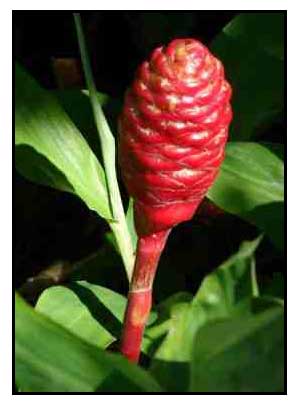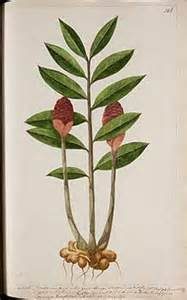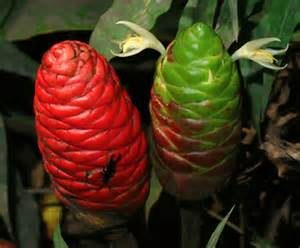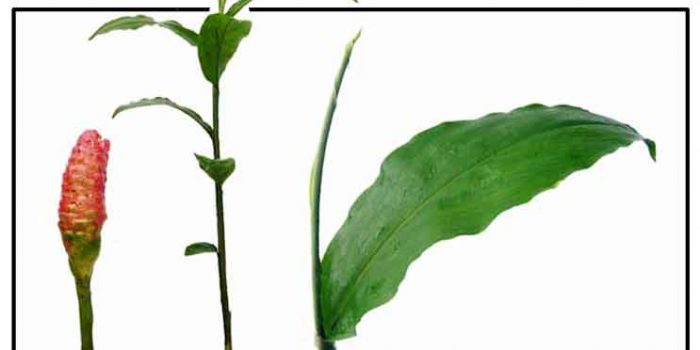Klasifikasi
Nama Vernakular : Lampoyang, Lempoyang, Tepus
Nama Botani : zingiber zerumbet L
Famili : Zingiberaceae

Khasiat Lempoyang
Dalam usaha mengumpul info khazanah herba di Malaysia, kami susun dan senaraikan pelbagai herba dan ulam yang terdapat di Malaysia. Moga ianya menjadi manafaat untuk semua. Amalan memakan ulam-ulaman segar oleh masyarakat kampung, menjadikan mereka hidup sihat sepanjang hayat. Moga ilmu dan khazanah ini tidak hilang di telan zaman.

Artikel kali ini membincangkan tentang Khasiat Lempoyang yang mana mempunyai pelbagai nama dan khasiat seperti Halia Hutan, kanser serviks, kurang nafsu makan, Lempoyang, memperbanyakkan air susu badan, sesak nafas.
Lempoyang biasanya tumbuh di kawasan semak samun. Ia dari jenis halia dan juga biasa dipanggil halia hutan. Pokoknya hampir menyerupai pokok bunga kantan. Ia mempunyai bunga yang cantik dan ketinggiannya lebih kurang 30-50 cm dari tanah. Sama seperti genus halia yang lain ia membiak melalui rizom dan pecahan rumpun.
Lempoyang, juga dikenali sebagai dalam bahasa Inggeris halia syampo, merupakan pokok halia dengan batang berdaun tumbuh sehingga ketinggian 1.2 m. Ia terdapat dikebanyakan negara tropika. Rhizom bagi Lempoyang (Z. zerumbet), telah digunakan sebagai perisa makanan dan pembuka selera dalam pelbagai masakan sementara pati rhizom telah digunakan dalam perubatan herba.
KHASIAT
***
Sumber:
http://www.hawasyazanalee.my/2013/09/khasiat-lempoyang.html/
Luiang-usiu is a smooth, erect, herbaceous plant. Rootstocks are large and tuberous, pale yellow within. Leafy stem is 0.6 to 2 meters high. Leaves are numerous, distichous, lanceolate to oblong-lanceolate, 15 to 30 centimeters long, 5 to 8 centimeters wide. Flowering stem from the rootstock is 10 to 30 centimeters long, clothed with long, appressed, obtuse sheaths, bearing at the apex an  ovoid, oblong, or cylindric spike, red or green in color, 5 to 20 centimeters long. Bracts are numerous, imbricate, orbicular, 2 to 3 centimeters long, greenish, merging into red, and holding water. Flowers are 5 centimeters long, white or cream colored, the tube as long as the bracts, with 3-lobed lips. Fruit is oblong, about 2.5 centimeters long. Seeds are oblong, black, about 4 millimeters in diameter.
ovoid, oblong, or cylindric spike, red or green in color, 5 to 20 centimeters long. Bracts are numerous, imbricate, orbicular, 2 to 3 centimeters long, greenish, merging into red, and holding water. Flowers are 5 centimeters long, white or cream colored, the tube as long as the bracts, with 3-lobed lips. Fruit is oblong, about 2.5 centimeters long. Seeds are oblong, black, about 4 millimeters in diameter.
Distribution
– From norther Luzon to Mindanao, in most islands and provinces, In thickets and near settlements at low and medium altitudes.
– A native of tropical Asia.
– Now pantropic.
Constituents
– Volatile oils of the rhizomes contain zerumbone, humulene and camprene.
– Studies have isolated bioactive compounds: humulene, monoterpenes, zerumbone from the essential oil.
– (Z)-nerolidol have been isolated from extracts of stems, leaves, and flowers.
– Ethanol extract has yielded sesquiterpene and zederone.
– Aqueous extract has yielded phenolic compounds, saponins and terpenoids.
– Study isolated two aromatic compounds, p-hydroxybenzaldehyde and vanillin, and six kaempferol derivatives from the rhizomes.
– Preliminary phytochemical analysis of rhizomes revealed glycosides, sterols, triterpenes, saponins, tannins, carbohydrates, proteins, amino acids, and volatile oils. (23)
– Study of leaf oil yielded 29 components with major components of zerumbone 36.98%, α-caryophyllene 16.35%, and camphene 9.24%. Rhizome oil yielded major components of zerumbone 46.83%, α-caryophyllene 19.00%, and 1,5,5,8-tetramethyl-12-oxabicyclo[9.1.0]dodeca-3,7-diene 4.28%. (27)

Properties
– Considered antihyperglycemic, antiinflammatory, antiulcer, antioxidant, anti-platelet activating factor, antimicrobial.
Parts utilized
Rhizome.
Uses
Edibility
– Used as food flavoring and appetizer in various Malays’ cuisines.
Folkloric
– In the Philippines, decoction is prescribed for asthma, and as a topical for rheumatism.
– Pulverized rhizome also used for diarrhea.
 – The fluid squeezed from the swollen ends of club-shaped stems is used for shampoo.
– The fluid squeezed from the swollen ends of club-shaped stems is used for shampoo.
– Rhizome is used like the common ginger, as a remedy for coughs, asthma, parasitism, and variety of skin diseases.
– In China, used for stomach aches, tonic and stimulant.
– Malays use the fresh rhizome for edema, stomach aches, sores. The juice of boiled rhizomes are used to treat worm infestation in children.
– In Thailand, fresh rhizomes are used as antiflatulent.
– In China, rhizomes macerated in alcohol are used as tonic, depurative, stimulant.
– In Taiwan, plant used as antiinflammatory adjuvant for stomach pains, fever and sprains.
– In India, rhizome powder mixed with Morinda citrifolia used for severe pain. Cooked and softened rhizome used for toothache, asthma, cough, worms, leprosy and other skin diseases.
– In Hawaii, compressed rhizomes used for bruises and cuts and to treat headaches, toothaches, ringworm, joint sprains. The milky juice from the pine cones are used as shampoo.
– In Southeast Asia, used for fever, toothache, loss of appetite, constipation and pain.
Latino healers in NY use ZZ for uterine fibroids.
Others
– Perfume: Powdered rhizomes used as perfume.



Baru tau yg lempoyang nie sgt sedap dibuat ulam rupanya…bru td first mkn…sedap sgt…rugi selama nie x tau…sedangkan mak mertua mmg tanam lempoyang nie dgn bnyk skali…
Assalamualaikum. Mak mertua awak tanam lempoyang ni ye? saya tgh dok cari lempoyang ni…awak dok mana ye, Diyya?
Alhamdulillah. Memang bagus amalkan herba lempoyang
Assalam, sy nak bertanya, rumah mak mertua kat mana? sy mmg nak cari buah lampoyang ni
rizom yg muda ke yg tua utk buat ulam?
SAYA ADA JUAL ANAK BENIH POHON LAMPOYANG. 0175476025
Kat rumah ada pokok lempoyang. Saya dok sg buloh. Dtg la klu berhajat
saya nak beli benih lampoyang
sila contact saya Zul 019 6941772
nak beli benih lampoyang